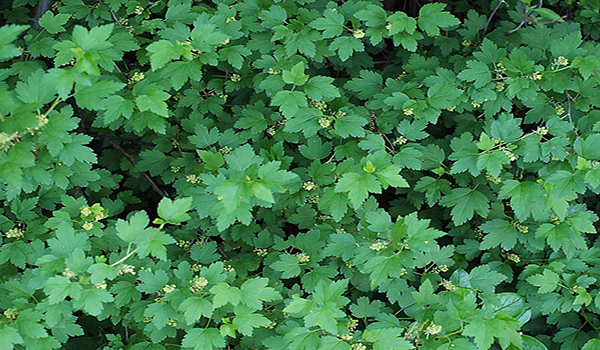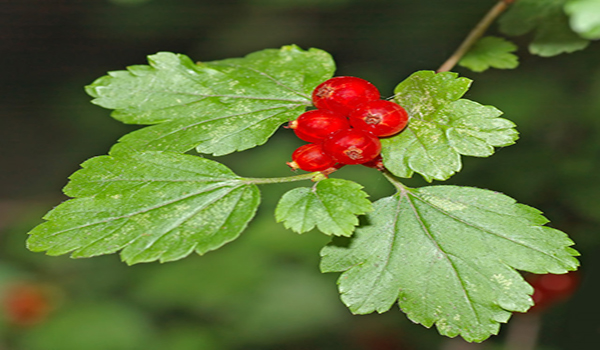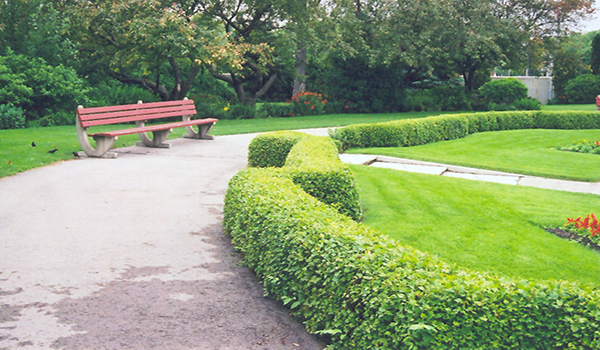Alpine currant variety or how to decorate your site
Home gardens are rarely decorated with fruit bushes, alpine currant is an exception. Dense greenery, abundant flowering and bright berries distinguish it from other plants, so it is often used to ennoble the green area around the house.
Description
Alpine currant is an ornamental shrub up to 2 meters high. It is not demanding on the choice of soil, can grow in rocky areas, resistant to weather conditions, withstands both cold and heat. The leaves of this species are very small, densely located on the shoot. It blooms for 10 days, the fruits are red, they look festive against the background of green foliage.

Berries decorate the shrub in summer and autumn, propagate the plant by seeds, cuttings. Due to the small size of the leaves, the bush lends itself well to shaping, from it you can make not only simple geometric shapes, but also intricate shapes. Schmidt is an ideal variety of currants for hedges: evenly trimmed low shrub fences look neat enough. But the biggest plus is that the berries are healthy and tasty!
Growing conditions
The shrub is propagated by seeds, lignified cuttings or layering. The easiest way to propagate currants is using cuttings. For cuttings in the spring, you need to cut off shoots with buds about 20 cm long. They must be rooted in light, loose soil. After rooting in the fall, the seedlings are planted in a permanent place and heavily pruned. Can be propagated by layering or dividing the bush.
When propagating by seed, sowing is carried out in autumn or spring. Seeds are pre-stratified (stratification is one of the ways to prepare seeds for sowing; it consists in long-term storage of seeds at low positive temperatures). Alpine currant seedlings are easy to transplant, but they need feeding.

Unfortunately, bushes can be attacked by aphids, spider mites and rust. If you spray alpine currants with insecticide and fungicide, it is quite possible to get rid of them. The alpine currant prefers a sunny location, although it can tolerate shading. Rich, fertile, well-drained, moderately moist soils are necessary for good growth and fruiting.
Planting is carried out in autumn or spring, placing the bushes at a distance of about 1.5 meters. Before planting seedlings, you need to look at them, cut diseased and broken branches, long and bare roots. It is very important to prevent the root system from drying out at all stages of storage and preparation of plants for planting. It is useful for plants to immerse them in water for several hours before planting. If the water content of the plants is good, it is enough to dip the roots in a soil mash.

In the first years after planting, it is advisable to apply nitrogen fertilizers every April, and in the fall, compost should be applied under each bush. In the spring, you need to loosen the ground and prune the bushes, removing the old, affected branches at the very base.
The most popular varieties of alpine currants are:
- Aurem - wide bush, young leaves of golden color;
- Pumila is a dwarf variety with small leaves;
- Laciniatum is distinguished by heavily indented leaves.
Agrotechnics
The agricultural techniques for planting and growing any type of currant, including alpine, are basically the same. The berries have a high resistance to frost and high temperatures, and this is excellently combined with the good resistance of the crop to shedding.

Average yield per bush: 8 kg.It must be remembered that the productive age of fruiting branches in currants is about 5-6 years. Therefore, they can be left on the bush for longer, gradually renewed due to strong zero shoots, the bush itself can be used productively for up to 15 years, maintaining its condition with rejuvenating pruning, proper nutrition and soil maintenance.
It is more convenient to land together. One person puts a bush in the hole, maintains it at the required height and spreads the roots, while the other falls asleep. The plants shake lightly and press the soil to the roots with their feet so that there is no void between them.
After compaction, they again fill up the earth and finally trample it around the bush. Stem parts trapped in the soil provide a reserve of basal shoots and additional roots, and the formation of a wide, multi-stemmed bush. Shallow landing is unacceptable. For better growth, the bush is planted at an angle of 45 °. With a slight twitch, it should not be pulled out. Planted plants are watered with water at the rate of 3-5 liters per bush.
Video "Currant care"
A video on how to properly prevent and eliminate diseases characteristic of a bush that has not been cut off.
